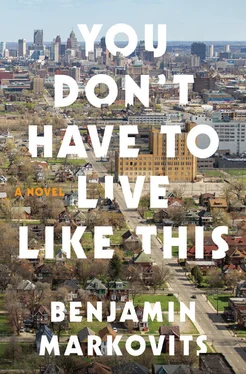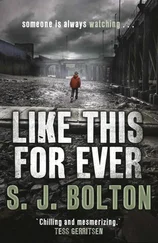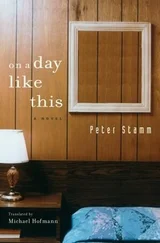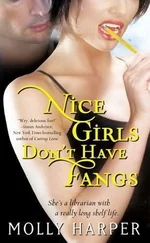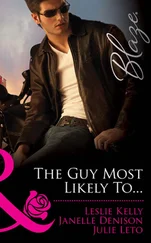I felt hot and shivery, and sometimes the ice pack helped and sometimes it didn’t. The room itself was probably too hot. There was a young man with his shirt off, a good-looking white guy, well built, maybe college age or a little older, pacing back and forth and talking. He was either high on something or coming down from it. “You need to hook us up,” he said, loudly but not at the top of his voice. He wasn’t shouting. “You have to medicate the people.” But he kept repeating himself.
In one corner of the room, opposite reception, there was a TV fixed to the ceiling, not much bigger than the kind of TV you get in a motel. I couldn’t hear it but I could see it. They were showing the local news. A reporter stood in front of a camera van in front of a burning house. The house looked more or less like the houses on Johanna Street, and I picked my way through people’s legs and bags and kids to get a closer look. At the bottom of the screen a news ticker ran through the day’s stories, but there were also captions for the hearing impaired. You could see the reporter moving his mouth, and you could see the words appear on the screen below, not always perfectly spelled but clear enough. This is how I found out about the riots.
They lasted three days. Most of the damage was confined to New Jamestown, but there were shops on the periphery, on East Jefferson, on Gratiot, where a few big chains had moved in, that also took a hit. They started a little after six o’clock, when WDIV reported the verdict in Nolan’s case. But the truth is, preparations must have been made beforehand; there was an organized element.
Houses and cars were burned, and in some cases the fire spread across entire blocks. That first night was clear, cool and windy, the second day was overcast and slightly warmer, and it finally rained around four in the morning and continued raining for the rest of the third day. But on that first night the fires just jumped around.
Mrs. Smith’s house was one of the ones that burned. I don’t think she was hurt, though I haven’t seen her since the trial; I’m not sure. The fire took out the inside and the second floor fell in, though the walls and the roof survived. From the outside it almost looks livable, except the window frames are charred holes. There’s no glass. But the roof on my house went up in smoke. My bed was soaked with rain, and my clothes and books and shoes lay over the open stairs — that’s how I found them later. For some reason the living room in Walter’s apartment came out okay, but the flames reached such a high temperature in his kitchen that some of the plastic toys in the garden melted on one side.
There were more than a hundred arrests. Seven people died, one of them shot by the police, which came in for a lot of criticism afterwards. Some of my neighbors said it was basically a looting situation, nobody wanted to hurt anyone. It was kids, teenagers, young men; girls and women, too. They just wanted to burn stuff and steal stuff. But it depends who you talked to, I also heard arguments on the other side.
Steve Zipp got hit by a stolen car. The driver was a kid named Kwame Richardson, who tried to help him. He drove him to the emergency room at Henry Ford, and police outside the hospital arrested the boy. Later the charges were dropped. Steve turned out to be okay — two broken ribs and a deep tissue bruise, just above the knee, that made him limp for a month.
While this went on I waited in another hospital to see a doctor. Tony had a hangover already. We talked about his book. He was halfway through the fatherhood memoir, but this Beatrice deal had thrown him. Maybe he was on the wrong track. For years he’d been trying to write a novel about Detroit.
When the doctor, one of these good-looking, rich-looking old white guys, a very competent person, saw me, he said, “You picked a bad night to have an accident.”
“My one-year-old hit him with a telephone,” Tony said.
Then the doctor sent me off for an X-ray, which meant another half-hour wait. Tony stayed with me the whole time and even stuck around for the X-ray itself. A technician guy sat me down in a kind of dentist’s chair, covered my chest with a heavy gray vest and turned on the invisible forces, which made a quick buzzing sound.
After that we waited some more for the results — Tony kept stocking up on chocolate and potato chips from one of the vending machines. It was ten o’clock by this point, but I didn’t eat anything. I still had a fever, I kept drinking cans of Sprite.
Then the doctor came back.
“You’ve got a fracture, there,” he said, pointing at a spot on the transparency. The bones and shape of my face were clearly visible; there was a white glowing scar under one of my eyes. And beneath the skull, with that grin you can’t help, my brains, my thoughts, like jam in a jar.
“So what do we do?”
“You’ve got two options. You can do something, or you can do nothing.”
“What happens if I do nothing?”
“I don’t know yet. The fracture hit the nerve — he got you right on the money. But what we can’t tell from this is if it’s still exerting pressure. I also can’t tell how badly the nerve is damaged. Sometimes you just get a pinch. We could operate and try to relieve the pressure, but it’s a very delicate little bone, we might make things worse. There’ll be a scar, we do what we can to minimize it, we come up from under the line of your jaw like this. But even if everything goes beautifully it might do no good. How bad is the loss of feeling?”
“About the size of my hand. Half my lip. Even drinking this soda feels like pouring something into a container.”
“Well, it’s your choice. If you want, I can book you in.”
“If everything’s fine when will the feeling come back?”
“That’s hard to say, too.”
But I let it go — I let Tony take me home, back to his place. Another two hours in the car. I-94 was closed, Gratiot was closed, we had to go north on 75. There was a slow river of cars. I fell asleep on the way. Tony did all the driving, perfectly sober by now. When I opened my eyes I saw his forearm on the wheel. I felt like a kid, my temperature must have been close to 103. The Tylenol they gave me at the hospital was wearing off. But I slept anyway. Then around one in the morning he woke me up. We were in his driveway, it was a cool night, I walked inside. Cris had made up the sofa bed.
ABOUT A WEEK AFTER THE riots, Walter and I walked around the neighborhood and looked at the house, to see if there was anything we could salvage. He and Susie were staying at Bill Russo’s place on Lake St. Clair. They had a little baby — all of that went through. We drove over in Walter’s car and managed to fill up the trunk with clothes and toys and books, but I didn’t care about any of this stuff, I was just going along. We saw a few people trawling through the rubble, not all of them familiar faces.
About half the houses on Johanna had burned down, the rest had broken windows, some of them were boarded up. I said to Walter, “Well, this is more or less what it looked like when I got here.”
Robert’s neighborhood didn’t look much better — we walked around there, too. On the night of the riots, he drove home from Tony’s and saw what was going on and didn’t get out of his car. He drove straight through the night, heading south and east, through Michigan and Ohio and Pennsylvania and New Jersey and the Lincoln Tunnel. He ended up in Manhattan around breakfast time, parked in the street and bought croissants and cups of coffee from one of the delis around there to surprise Peggy with. We talked on the phone the next day, I heard the whole story.
For the first two months I couldn’t feel my face, and for the next two months I couldn’t tell if I could feel anything, and after that there was a kind of tingling that eventually turned into feeling. Most of the time I don’t think about it now. When I pull at my beard, there’s a very slight sensitivity on one side, like a mild sunburn.
Читать дальше
